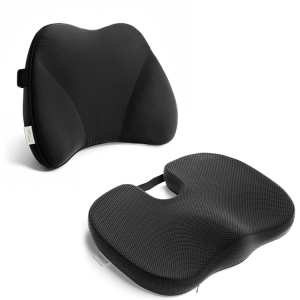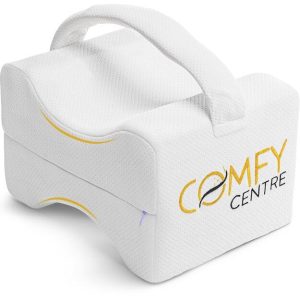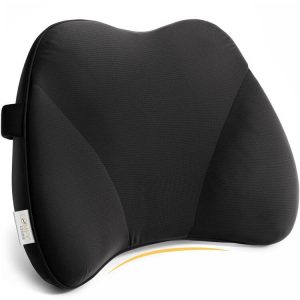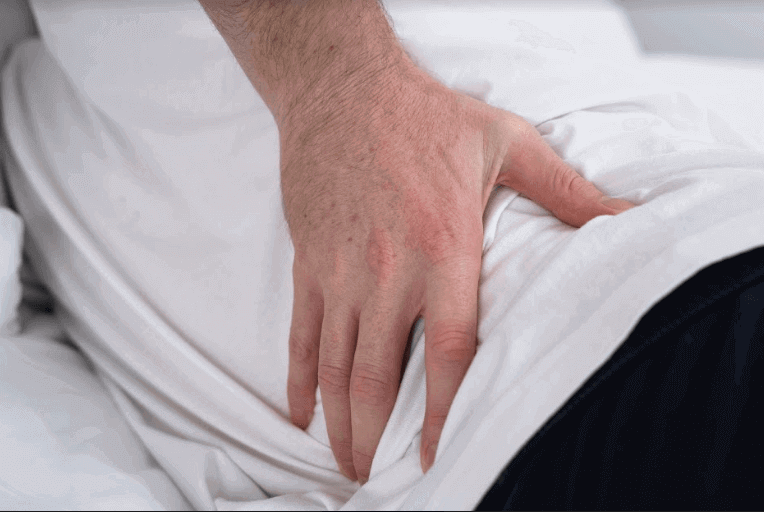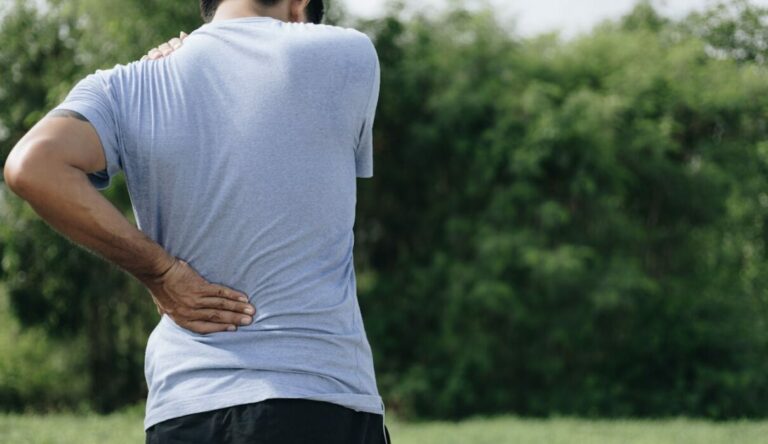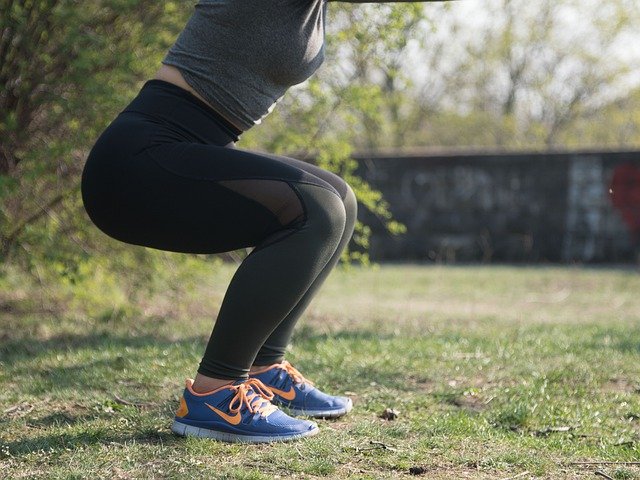
How low can you go? For as long as your knees allow you to. Squat is a fundamental movement that everyone does, regardless if you’re living a sedentary or an active lifestyle.
You squat down to pick up things on the floor when cleaning and you squat to grow your Gluteus Maximus for the gains. There’s NO other way around it: Humans have to squat.
However, it’s common to feel discomfort when squatting. It’s not something to fret over, but there are some measures you can take to prevent or lessen pressure on the knees.
Fitness experts say the root cause of knee pain when squatting is bad form. We’re going to breakdown everything to find out how you can squat properly without compromising your body.
4 Mistakes Beginner’s Commit
Shifting Your Weight Forward
One of the most common mistakes beginners do is leaning forward when squatting, making the weight swing onto the toes. As a result, the heels raise upwards, which makes it prone to accidents and injuries.
This improper form puts more pressure onto the lifter’s knee joint, straining the surrounding tendons. Repeatedly doing this movement error will manifest into knee pain, specifically in the knee cap region.
Quick Fix
The bar must be fixated over the mid-foot and it should only travel up and down, not leaning forward. Distribute the pressure of the weight into the ground with your foot, which means your toes shouldn’t take all the force.
The simple shift in movement allows the weight of the bar and plates to equally dispense onto your ankle and hip joints, which prevents your knees from becoming overworked.
Still struggling?
If the quick fix method doesn’t work for you, you may be experiencing ankle stiffness. This is when your ankles aren’t flexible enough to bend and get into proper position, your body compensates by shifting the weight to your toes.
We recommend taking an ankle mobility test, so you can gauge your physical limitations and squat safely.
Taking The Test
- Kneel with one leg in front of a wall, the distance between the wall and your toes should be five inches.
- Push your knees towards the wall. The goal is for your knee to connect to the wall without lifting your heels, weight should be equally distributed.
If you need to lift your heel off the ground to touch the wall, then the problem is your ankle mobility. Not your form. While it is possible to increase your ankle mobility, it does take time.
Regularly do ankle mobility stretches before you squat, foam rolling your calves and shins speeds up the process as well. What’s more, there are other squat stances you can do that puts less pressure on your knees, similar to the wide squat stance.
Inactive Hip Flexors
Novice lifters fail to engage their hip flexors when squatting, causing discomfort on the knees, compromising form, and technique.
As you start to squat, you need to actively pull yourself as you go down to position. In other words, don’t let the weight of the bar and plates do the job for you.
By activating your hip flexors muscles it steadies the trunk, enabling you to squat deeper as it allows you to have more balance.
The weight is distributed equally above your feet, which means less pressure on the knees. This is a quick fix method for beginners that alleviates discomfort by simply activating your hip flexors.
Misaligned Knees and Toes
Your knees should be in parallel to your toes when doing the movement. If not, it disrupts your form, making it prone to injuries. Misaligned knees and toes result in inward knee collapse, often referred to as knee valgus.
The unsteadiness in the lifter’s knee can take a toll on the knee cartilage, causing pain in the knee cap during and post squat workout. This leads to poor body coordination as it doesn’t activate your lateral glutes.
However, you can fix it by following a method called RNT, which stands for reactive neuromuscular training. It’s been proven effective to enhance lateral glute activation.
Quick Fix
Here’s how you can do the split squat for RNT:
- Put a resistance band around your forward foot as you do the split squat, allowing the band to pull your knee inwards.
- You should feel the band stimulating your lateral glutes as it maintains your knee in a stable position. When squatting your feet and knees should stay aligned throughout the movement.
Pro Tip: Add 2-3 sets with 15 reps each set for the workout is ideal to appropriately activate your lateral glutes. It prevents knee valgus from occurring while alleviating pain during the squat.
Excitement
In other words, going all out TOO soon. This is especially true for avid gym-goers who have skipped a month or two at the gym expecting they have the same feat of strength and mobility from before their absence.
It’s important to start with lighter weight before moving up to your usual load. Lifting too heavy too soon may result in quadriceps tendinopathy.
Pain is felt above or below your knee cap, but the good news is that this can be easily treated with proper care. It only takes a few weeks for your knee to be good as new again.
Here’s how you can treat Tendonitis:
- Don’t go overboard with your workout, reduce your load, and gradually increase as you train.
- Go for higher reps with lighter weight at 2 to 3 sets.
- Reducing your training frequency or leg day workout can speed up the healing process as well, limit to only one light training a week.
- Look for squat alternatives with lesser pressure on the knees.
If you can’t live without squats…
You can do box squats instead! You need to sit on a cross fit jump box to assist you with your squat depth. It lessens knee pain, allowing you to continue you with the program.
Box squats involve more vertical shin angles in comparison to conventional squats, which means it delivers better weight distribution during the movement.
Squat Alternative: Box Squats
- Look for a CrossFit jump box that’s fourteen or fifteen inches tall. Feel free to adjust the box as you please to make it suitable for you. Ideally, your thighs should be under the knee-level when you reach the bottom of your squat.
- Do the box squat without plates first, so you can get comfortable without the movement. After 1 set of 10 rep, put the box in a squat rack. Position your feet a bit wider than the usual hip-width distance.
- Ensure your toes are rotated out in between fifteen to thirty degrees, depending on what you’re most comfortable with,
- Start the movement by breaking with your hips. Push your knees out as you sit back. You do not have to push your knees out in exaggeration, kneecaps should be parallel with your toes.
- Touch the box with your butt. Do not plop.
- When going back up, squeeze your glutes at the top.
- 3 sets at 10-15 repetitions for your workout.
Wearing Knee Sleeves To Help With Knee Pain
Knee sleeves are worn by athletes and fitness enthusiasts to prevent injuries from occurring or re-occurring. Unlike knee braces, these do not hinder your natural range of motion, which means it does NOT immobilize the joint.
These are not recommended for people who already went through surgery or athletes with unstable knees, sleeves are designed to keep your knee safe from accidents or to prevent further injury to the damaged area.
Knee sleeves are the go-to solutions for athletes involved in strenuous activities, such as running, powerlifting, and jumping.
They increase blood flow to your joints, which decreases discomfort during and post-workout, including swelling. While it does deliver support, it still enables your knee to naturally strengthen.
Can Newbies Wear Knee Sleeves?
Technically, the answer is yes. However, novice athletes may not have the same experience of relief from wearing these sleeves compared to experienced weightlifters.
The reason is simple: A lifter with years of training experience under the belt progressively lifts heavier weights, which gradually toils the knee against the tendon, leading to joint weakness and discomfort.
An athlete who has trained years prior without using knee sleeves can immediately tell the difference upon lifting.
Knee Sleeves Takeaway: Should You Wear Them?
While these provide support on the knees by lessening pressure, it does not replace training and technique. You still have to make sure you’re squatting with the right form and posture before anything else.
If you’re looking for a way to keep muscles using the appropriate technique, knee sleeves can limit the discomfort. The formula is to use the right equipment + proper form = strength growth.
Using knee sleeves are a good way of preventing knee pain from occurring, but if you’re already dealing with knee discomfort, using a knee pillow helps you to treat your knee faster.
Post-Squat Recovery: Knee Pillows For Knee Pain
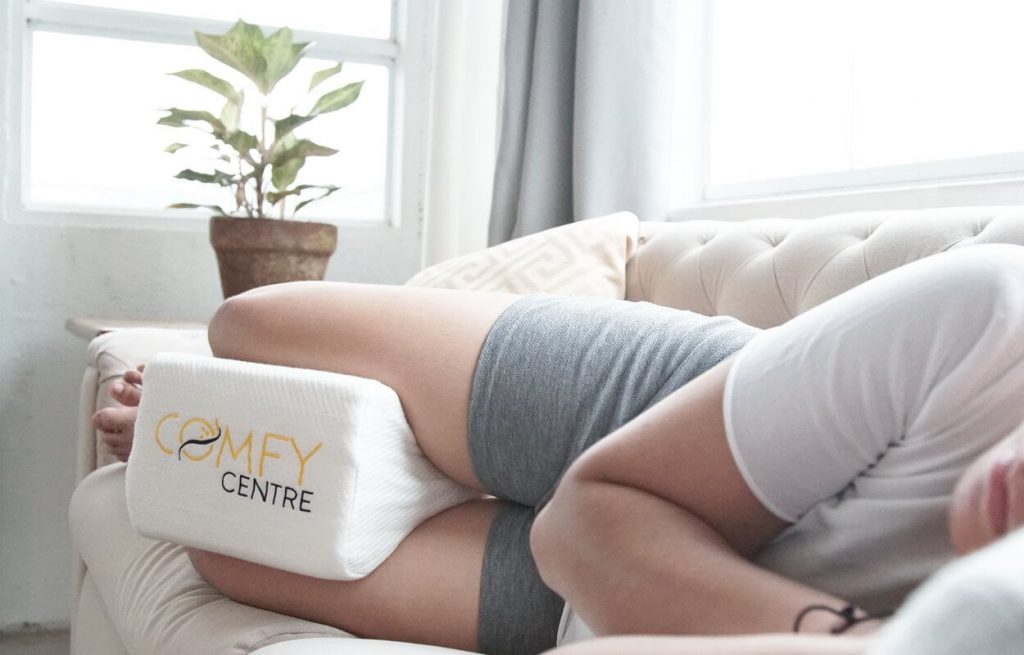
Getting proper rest goes hand in hand with nutrition to heal quickly. A knee pillow helps with relieving knee pain, allowing you to fasten your recovery time.
Here are 4 reasons why Knee Pillows are a must for every athlete out there:
- Stabilizes and balances your hip, reducing the pull on the spine and lower back.
- Assists you in achieving optimal spine alignment for comfort and recovery
- Eases stress from the knee as it distributes the pressure equally on your thighs
- Promotes blood circulation throughout your legs to reduce tension and muscle soreness
Conclusion
In a nutshell, knee pain is something everyone experiences at one point, especially when you’re an athlete. Just remember these 3 key points to make sure you’re hitting squat depth without hurting your knees:
- Before adding weights to the bar make sure you’re squatting with proper form
- Wear knee sleeves to limit knee discomfort when doing the movement
- Use a knee pillow for faster recovery after a workout and alleviate pain

